Market
6 Moments That Were Turning Points for the Art Market in 2023
From the downfall of a dealer to the $100 million Breuer building buy, here's what moved the needle this year.
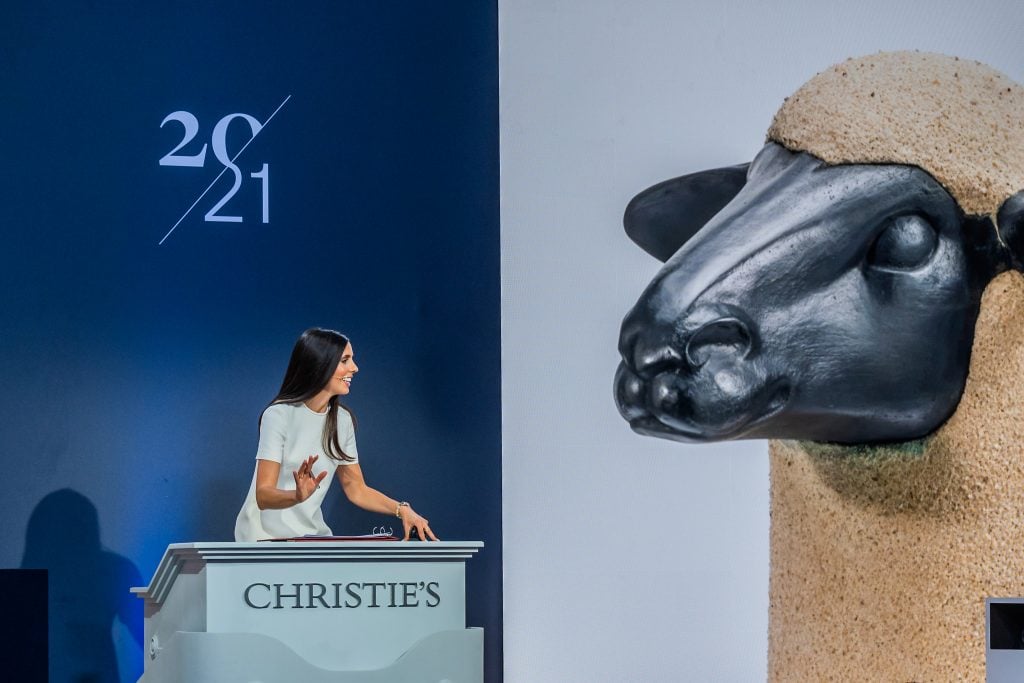
From the downfall of a dealer to the $100 million Breuer building buy, here's what moved the needle this year.

Artnet News

It was the year where, at long last, the art market veered into correction, which was no surprise. Other developments were less anticipated, even downright shocking. A beloved art dealer was sued for fraud and abruptly shuttered her businesses, which are now being liquidated. A controversial trove of jewelry went from an auction house dream to a public relations fiasco. And a slew of other market-moving events piqued our interest.
Here are Artnet News PRO’s six defining moments for the art market from 2023.
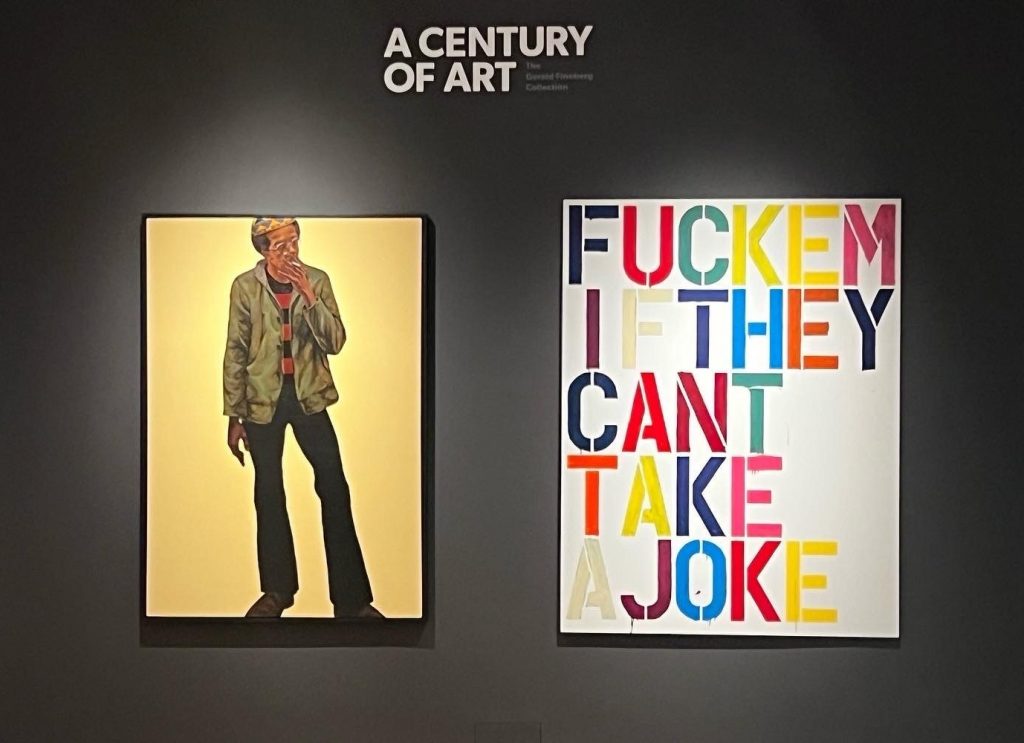
The installation of “A Century of Art: the Gerald Fineberg Collection” at Christie’s. Photo: Katya Kazakina
If ever there was a moment when the art market nosedived in real time, that moment was during the sale of Gerald Fineberg’s art collection at Christie’s on May 17 in New York. Estimated at $163 million to $235 million, the evening auction hammered $124.7 million, or $38.3 million short of the low estimate. Six unsold works included those by typically solid performers Mark Grotjahn, James Rosenquist, and Louise Bourgeois; paintings by Gerhard Richter, Lee Krasner, Willem de Kooning, and Christopher Wool went for firesale prices.
What made the event so striking was the fact that the estate didn’t take the auction-house guarantee and refused to accept third-party backing, all in a vain effort to maximize potential profits. (Our Art Detective column later examined what went wrong). In addition to exposing the depth of the market correction, the Fineberg sale underscored the crucial role of guarantees during times of economic and geopolitical volatility. Its outcome had an immediate effect, recalibrating the market in terms of pricing and strategy. By the time November sales rolled around, very little was left to chance. One high-stakes auction, the Emily Fisher Landau evening sale, was fully guaranteed by Sotheby’s and effectively 100 percent pressed, thanks to irrevocable bids on every single lot.
—Katya Kazakina
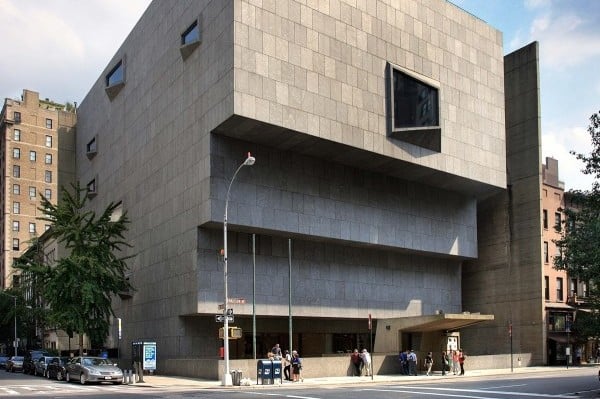
The Breuer Building. Courtesy of the Metropolitan Museum of Art.
The landmark 1968 building, which has housed three major New York museums, sold to Sotheby’s for more than $100 million in a deal announced in July. Sotheby’s plans to relocate its galleries and auction room to the Breuer in 2025 as part of strategic transformation of its real estate footprint that also involves leasing out five floors of its longtime headquarters on York Avenue to Weill Cornell Medicine.
Designed by Marcel Breuer, the building was the home of the Whitney Museum of American Art since inception until its move to the Meatpacking District in 2015. Since then it’s been occupied by the Metropolitan Museum of Art and, currently, by the Frick Collection, which has a lease that runs until August 2024. Sotheby’s will take over the following month and start getting the building ready for commerce.
The shift is one of many taking place on the Upper East Side. RFR Holdings will lease most of 980 Madison, known as “the art building” since its completion in 1949, to Bloomberg Philanthropies after the current leases end in 2025. The building was the original home of Parke-Bernet Galleries, the famed auction house that merged with Sotheby’s in 1964. (Sotheby’s Parke-Bernet moved to York Avenue in 1980).
The building’s biggest tenant currently is Gagosian gallery, which has been there since 1987 and now occupies 42 percent of the space. Other tenants are Nahmad Contemporary, Edward Tyler Nahem Gallery, and the offices of White Cube, which in October opened a flagship gallery with great fanfare just two blocks north, at 1002 Madison.
—Katya Kazakina

Heidi Horten wearing the Briollete of India. Copyright The Heidi Horten Foundation. Courtesy: Christie’s.
The record $202 million jewelry auction turned into a major public relations nightmare for Christie’s after the Nazi roots of the fortune used to assemble the dazzling collection were revealed.
Austrian billionaire Heidi Horten inherited the wealth from her late husband, Helmut Horten, a member of the Nazi Party during World War II whose riches were built by snapping up Jewish businesses under duress as part of Hitler’s Aryanization process.
While 98 percent of the lots sold, including a Cartier ring that fetched $15 million, the public outcry followed from Jewish organizations, Holocaust survivors, and Christie’s clients. The Tel Aviv Museum of Art scraped a restitution symposium organized by Christie’s that had been planned before the scandal.
Bowing down to intense scrutiny, the auction house cancelled the planned November sale of the remaining 300 lots from the Horten trove. The fiasco showcased the shifting conversation about restitution, which has moved from unearthing (and returning) looted objects to the examination of the fortunes behind acquisitions of fine art, antiquities, and jewelry.
—Katya Kazakina
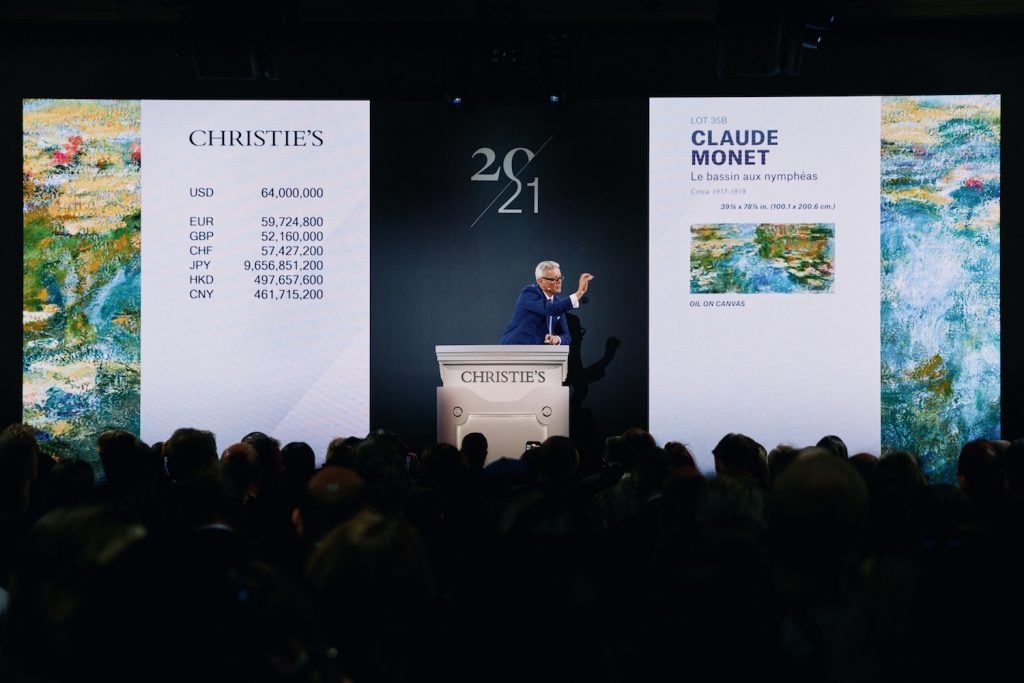
Jussi Pylkkänen selling the top lot of Christie’s 20th Century evening sale, Monet’s, Le bassin aux nymphéas for $74 million.
Christie’s 20th-Century evening sale on November 9 marked the end of an era, as veteran auctioneer Jussi Pylkkänen, who has been with Christie’s for 38 years, presided over his final New York sale before he moves on to a new career as a private advisor. Pylkkänen thanked the audience numerous times for what he described as “amazing adventures,” over the years and left the rostrum to a standing ovation after presiding over the sale of the top lot of the night, Claude Monet’s Le basin aux nympheas, for a premium-inclusive $74 million.
Pylkkänen has been one of the longest-serving and most high-profile international auctioneers ever. He handled the sale of billions of dollars worth of art, especially in recent years, when he conducted the sale of Salvator Mundi (circa 1500) that was attributed to Leonardo da Vinci and commanded a whopping $450.3 million in November 2017, becoming the most expensive work of art ever sold at auction. In addition to numerous nine-figure Giacomettis, Modiglianis, and Picassos, last fall Pylkkänen served as the auctioneer for the collection of the late Microsoft co-founder Paul Allen, which took in $1.6 billion. Previously, he served auctioneer for the collections of Elizabeth Taylor and David Rockefeller.
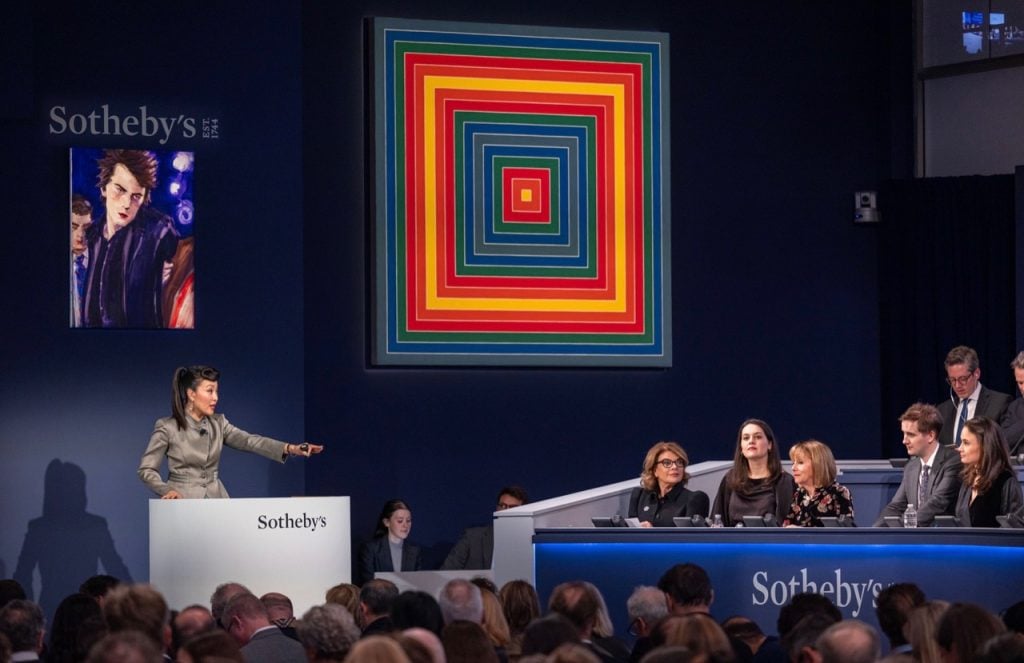
Phyllis Kao, from Sotheby’s client strategy team, fields bids in The Now sale, her first evening auction. Image courtesy Sotheby’s
Meanwhile, on the other side of the coin, Sotheby’s introduced a new evening-sale auctioneer for its ultra-contemporary and contemporary offerings this season. Phyllis Kao, vice president for client strategy in the Americas was stylish and charismatic, as she conducted the event with confidence and tempo, occasionally switching from English to Mandarin. “A star is born,” our senior reporter Katya Kazakina declared after watching her in action that night.
Kao was formerly a specialist handling Chinese artworks at Sotheby’s, but is now a member of the client strategy team focused on the Modern evening sales. She has over 15 years of auction experience.
Kao is a Taiwanese-American Bay Area native, and holds a degree from Columbia University. She can conduct auctions multilingually in English, Mandarin, and French. May the fireworks begin!
—Eileen Kinsella

Peter Doig. Photo by Fergus Carmichael. Image courtesy The Courtauld.
In the past year or so, two of the world’s most expensive living painters flexed their power status by jumping ship from their longtime respective galleries.
Like most avid fans of Scottish-born painter Peter Doig, we were thrilled to hear about a major Courtauld show in London that opened in February. But why, we wondered, had many of these large scale works on view come straight from the artist’s more recently established London studio?
It is extremely unusual that new work would go to a museum straight from the studio. Some sleuthing turned up a major development: Doig had split with Michael Werner, his dealer of nearly 25 years.
Doig, who is one of the most expensive living painters, never made a formal announcement, but a representative for the gallery confirmed at the time that it no longer represented Doig. It appears the relationship had become quite strained over time, according to sources familiar with the situation.
Although Michael Werner gallery declined to comment further, Artnet News’s Annie Armstrong reported that Doig’s relationship with Werner began to deteriorate during the pandemic, and was hastened after the gallery decided to axe a financial arrangement it had with Doig’s wife Parinaz Mogadassi, who runs the London- and New York-based gallery Tramps. But details about what else might have caused their relationship to sour were scant.
We dug deeper. Among the twists and turns of Doig’s phenomenal market rise, was something of a cautionary tale about the pitfalls of the traditional gallery approach when it comes to navigating a runaway market. The Peter Doig Story might even help explain why increasing numbers of in-demand artists are looking for new models of representation today.
Is there a small but pronounced trend happening where powerful and pricey living artists are calling all the shots when it comes to their gallery arrangements? At the end of last year, German superstar painter Gerhard Richter said “Auf Wiedersehen” to New York’s Marian Goodman Gallery, his dealer of 37 years, to join David Zwirner, which has locations in New York, London, Paris, and Hong Kong.
“I’m happy to be represented by David Zwirner. I have known David since his childhood as I had already in the 1960s worked closely with his father, Rudolf Zwirner,” Richter said in a statement. “I feel this represents a beautiful continuity across generations.”
“We are very proud to have represented one of the most remarkable artists of our time for nearly 40 years,” Philipp Kaiser, Goodman’s president and a partner at the gallery, told Artnet News in an email. “We acknowledge his decision at this stage of his life.”
—Eileen Kinsella
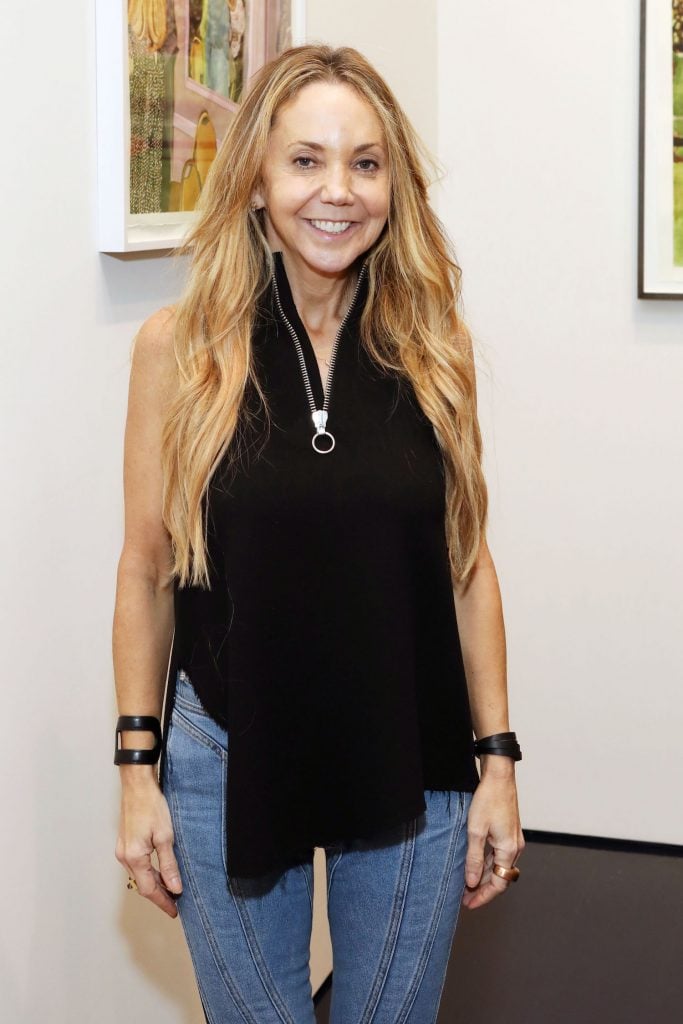
Lisa Schiff during at SFA Advisory in New York City in December 2022. Photo by Udo Salters/Patrick McMullan via Getty Images.
Just a few months ago, it was hard to find an art market follower or expert who wasn’t impressed by the knowledge and dynamic energy of advisor Lisa Schiff. She seemed to be everywhere around the art world: at art fairs; on panels; quoted in the media, including by Artnet News; at major auctions and elsewhere.
So there was a collective gasp when a bombshell lawsuit alleging that Schiff had been operating a “ponzi scheme” and had bilked a group of investors out of $1.8 million was filed in May. And that was just the beginning. The plaintiffs continued to uncover a shocking list of blue-chip art deals they had allegedly given Schiff money to buy on their behalf, which were never paid for or only partly paid for.
Schiff almost immediately shuttered her Tribeca gallery and office space storefront, and has moved out of the pricey pad known as the Jenga building where her monthly rent was a lofty $25,000. She filed for a form of voluntary bankruptcy and a creditor is in the process of sorting out and prioritizing claims. Hundreds of works belonging to Schiff could be auctioned by Phillips New York next year. Court documents also unveiled that Schiff is being investigated by U.S. authorities including the U.S. Attorney’s Office and the New York District Attorney.
And as Schiff’s case heats up, another major art world scandal is still working its way through the legal and prison system. Robert Newland, a British national and co-conspirator of disgraced art dealer Inigo Philbrick, was set to return to the U.S. in mid-December in order to report to prison for a one-and-a-half year sentence, the result of his role in the massive fraud, which has been estimated at upwards of $85 million.
Philbrick and Newland deceived investors by selling more than 100 percent of “fractional ownership” shares in dozens of pricey paintings. The scheme imploded when the market for particular artists slowed down. Philbrick who has been in jail since he was captured on the South Pacific island of Vanuatu in June 2020, is set to be released from jail next year. Art owners and investors are still wrangling over who is entitled to what in disputes over blue-chip art by Rudolf Stingel, Yayoi Kusama, and others.
—Eileen Kinsella